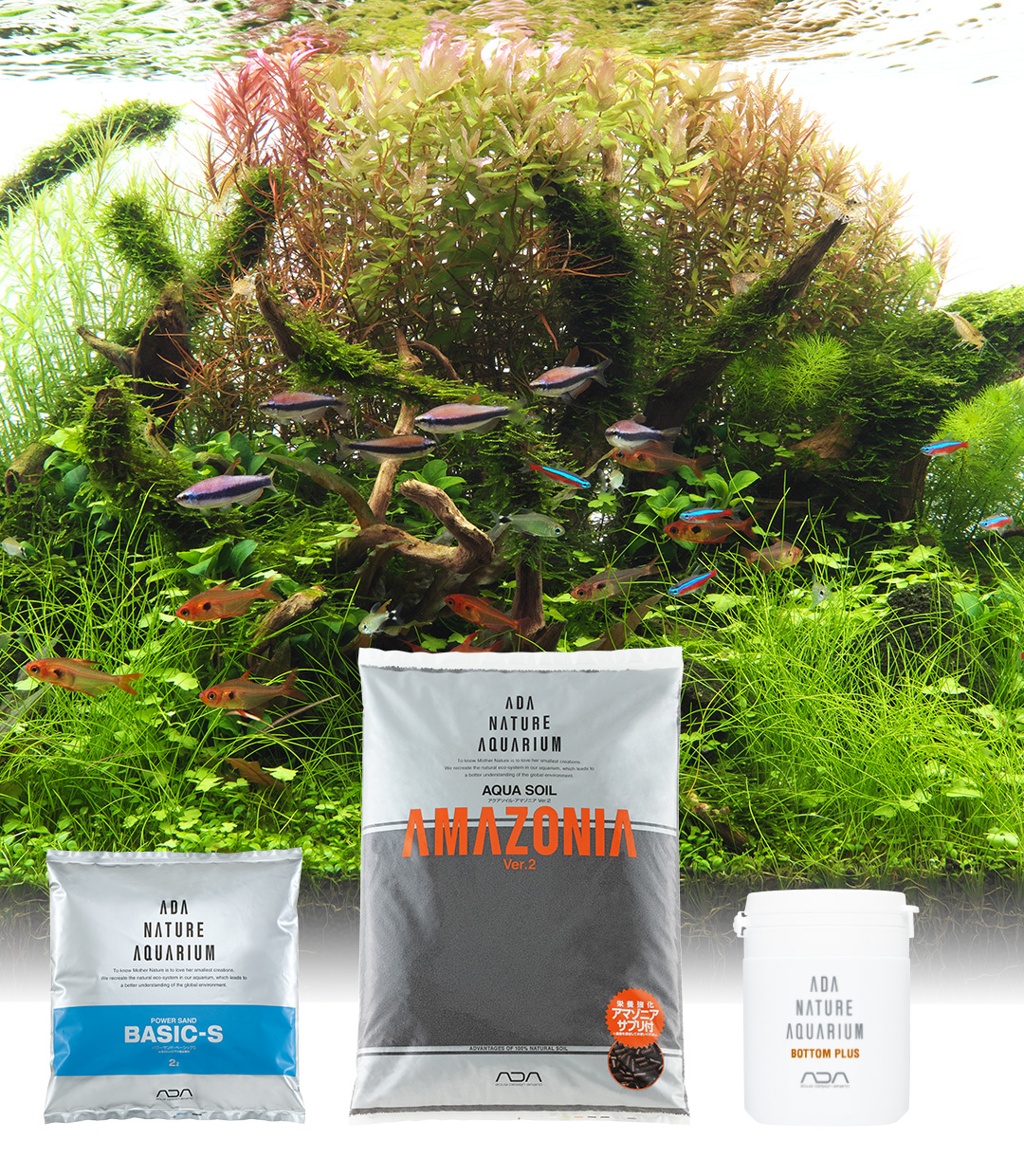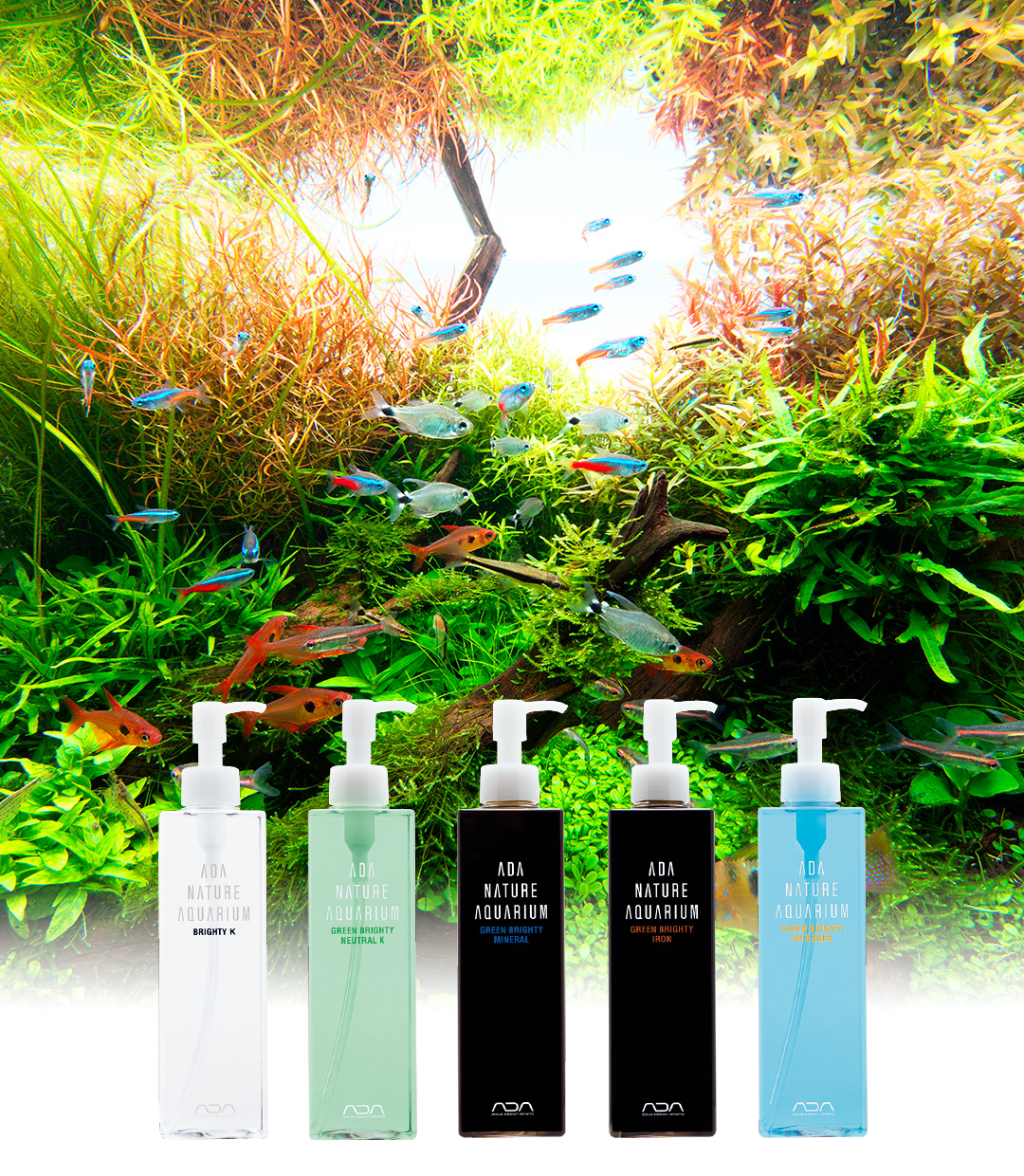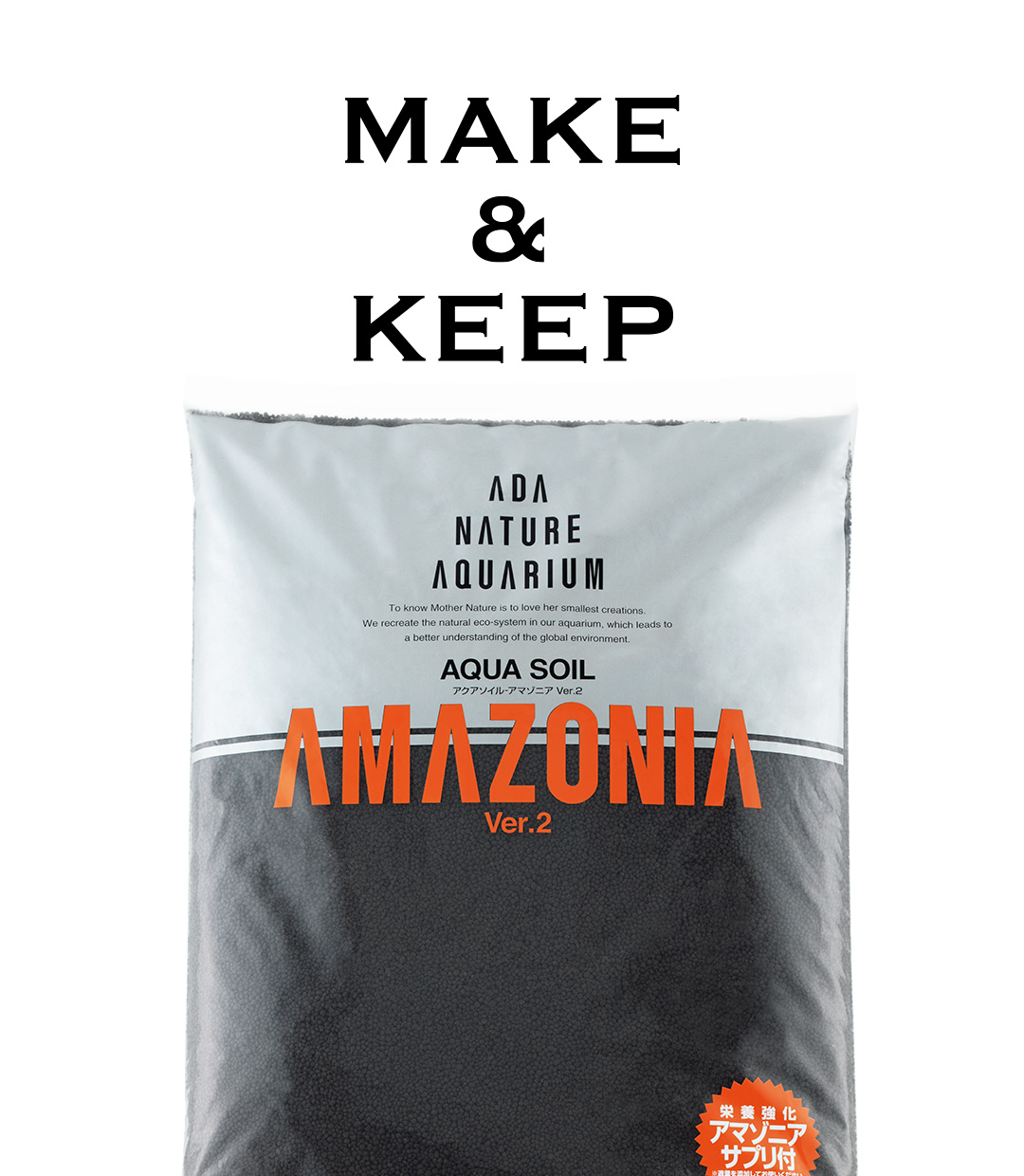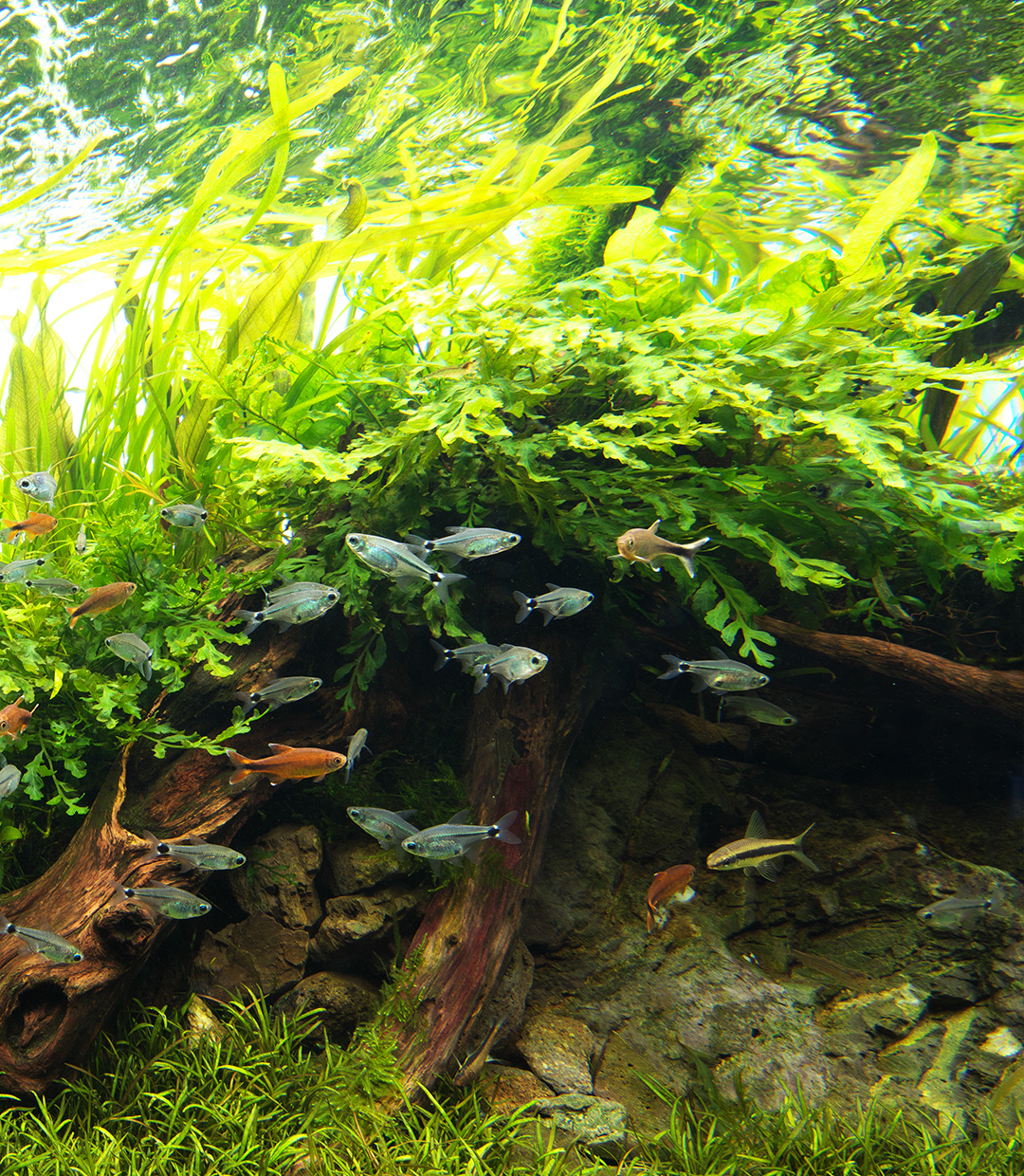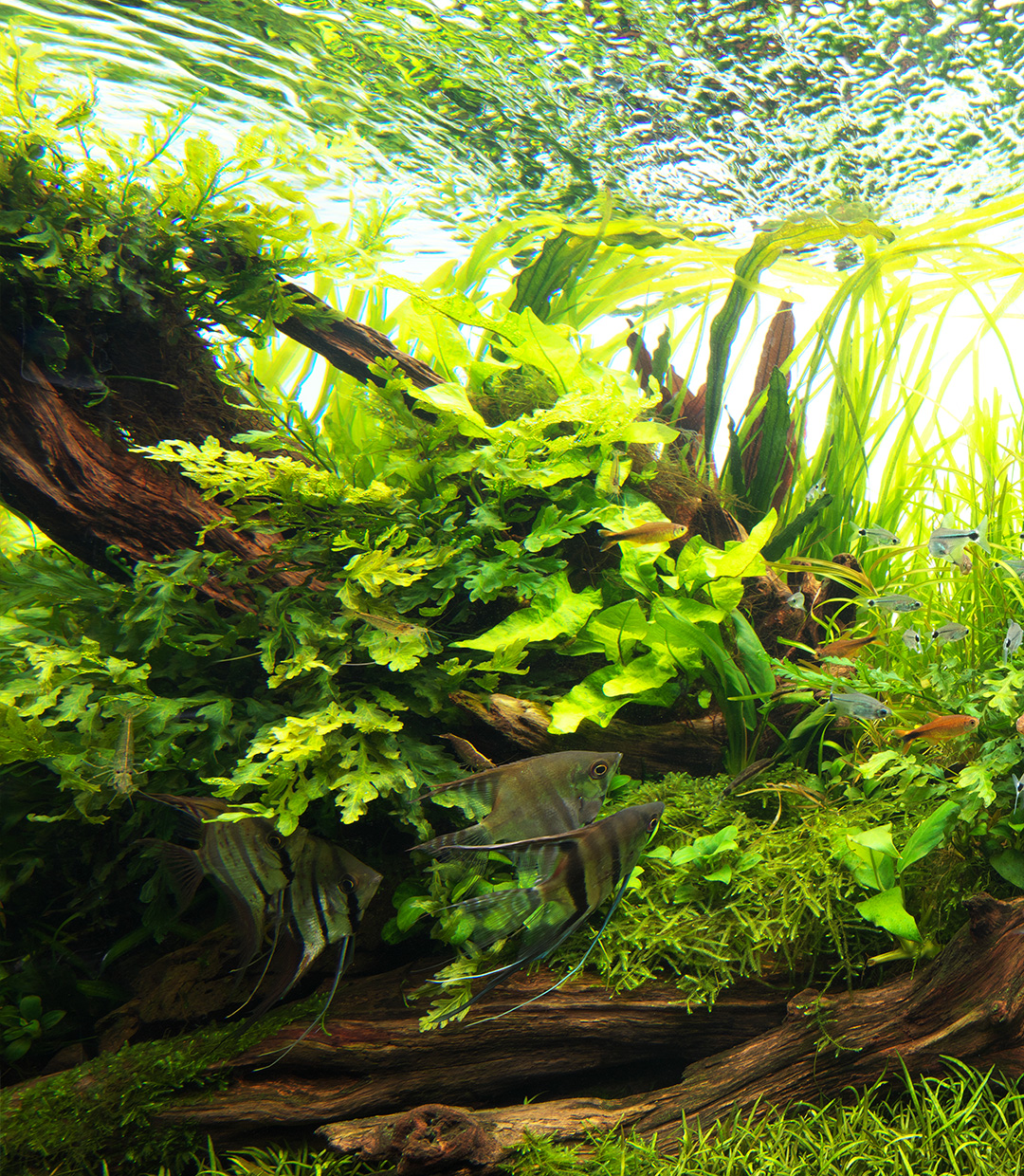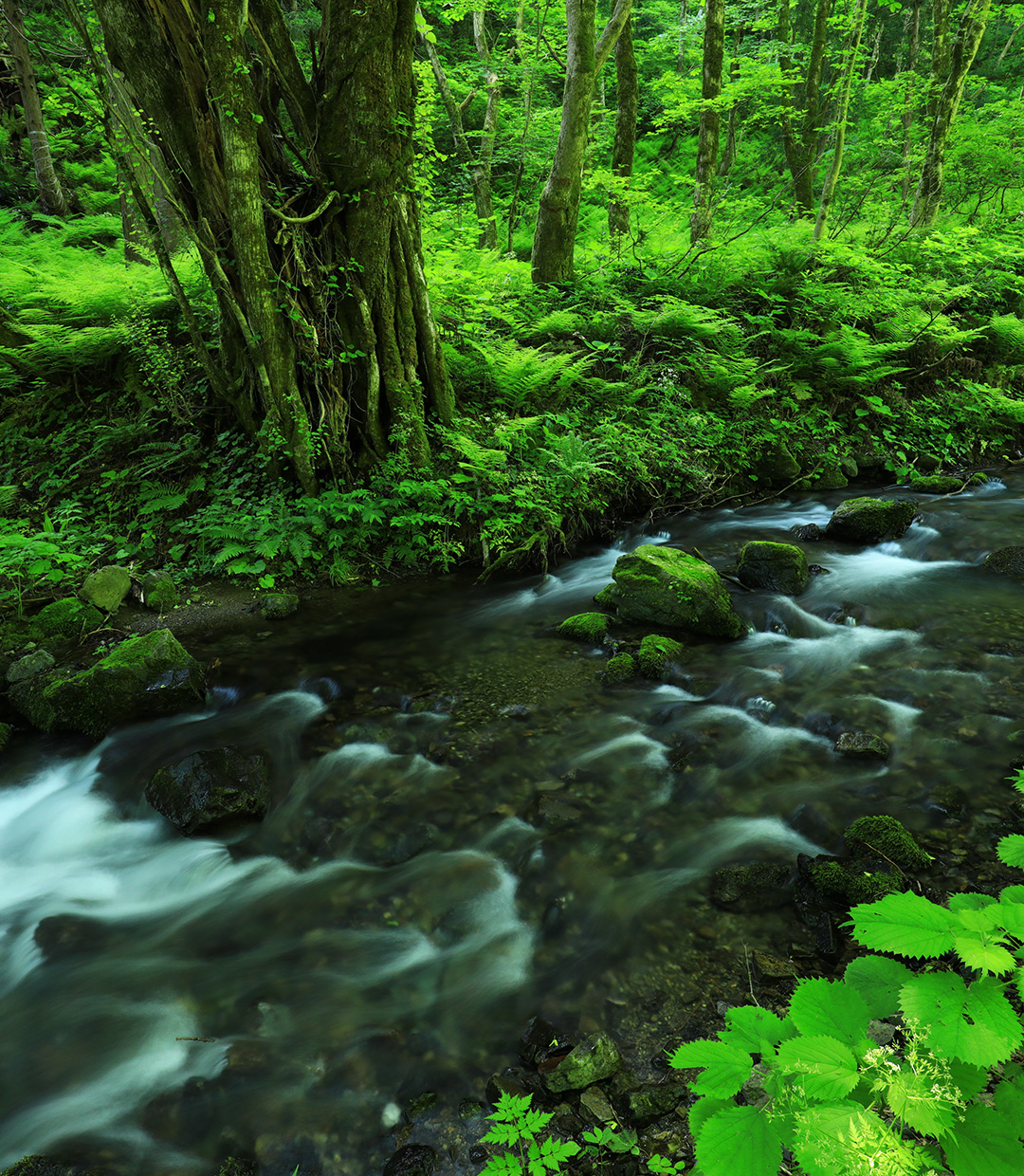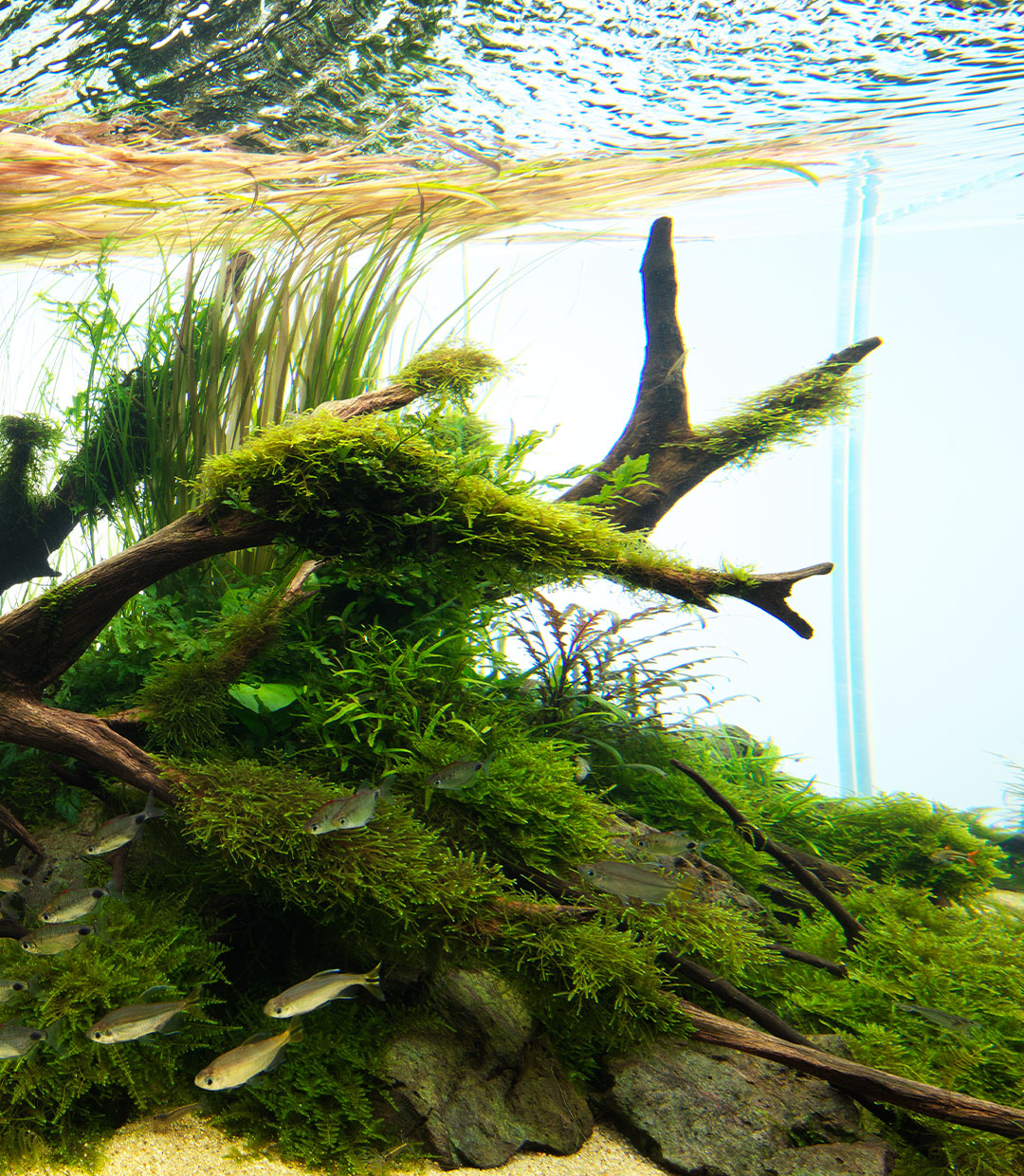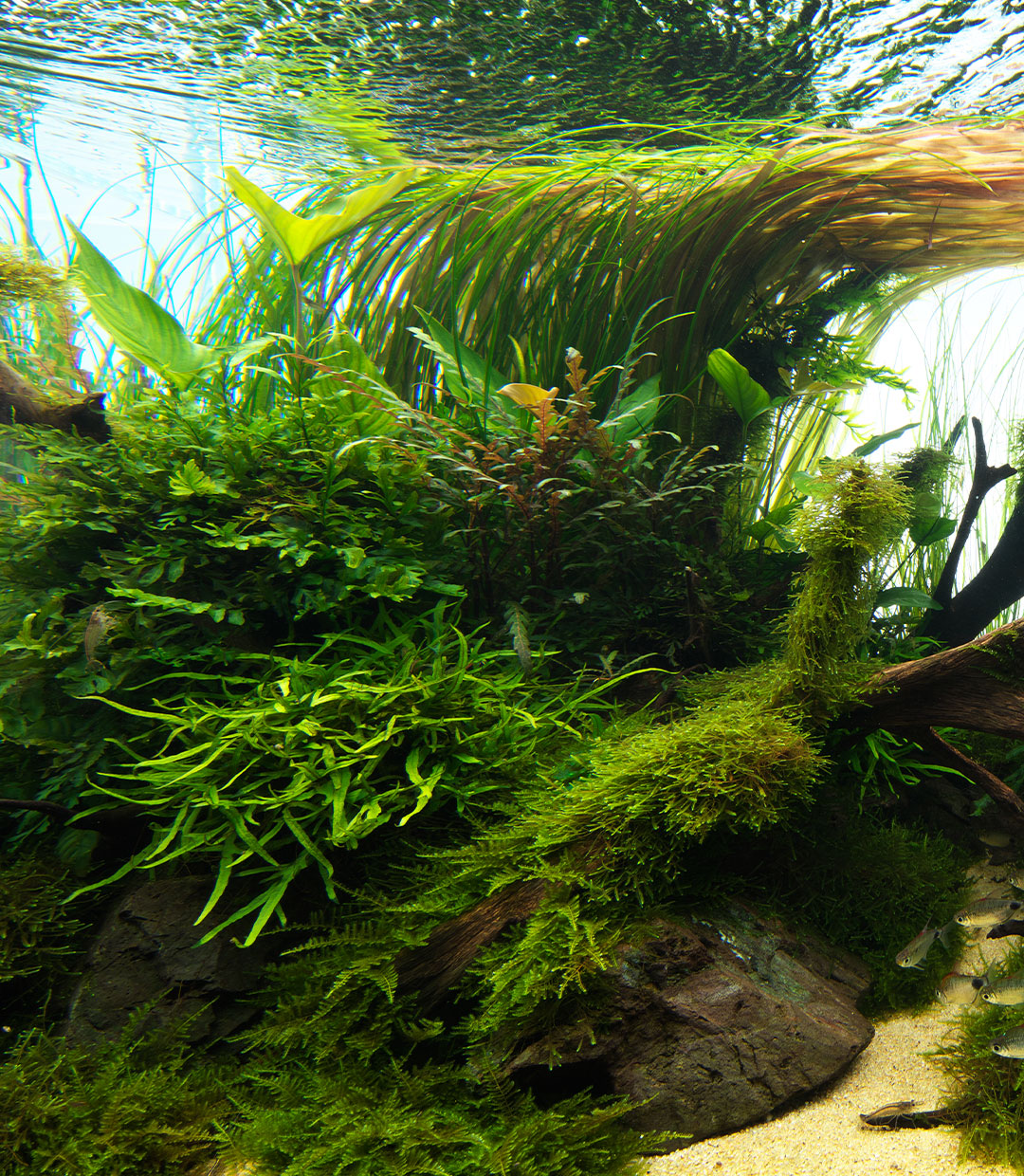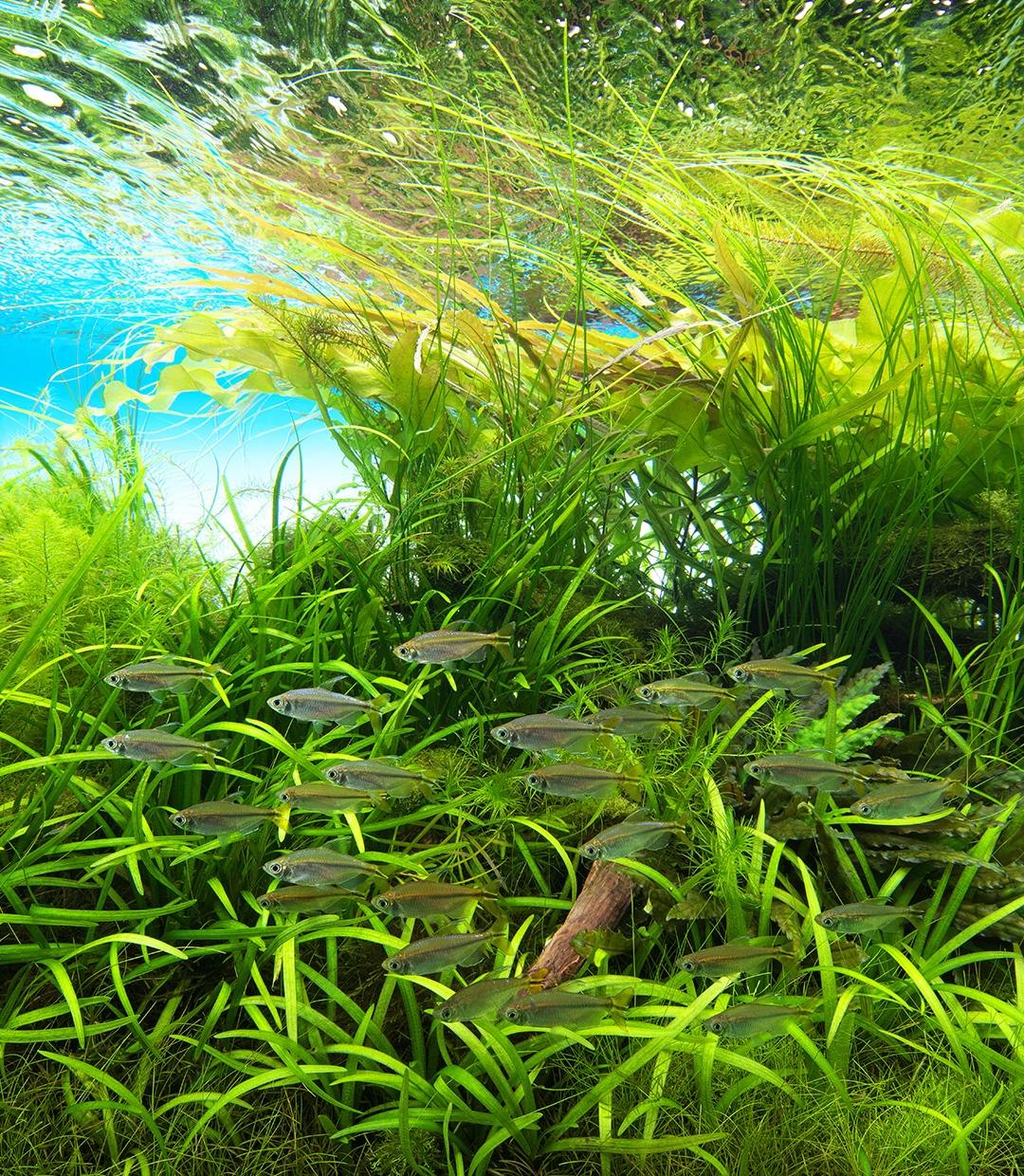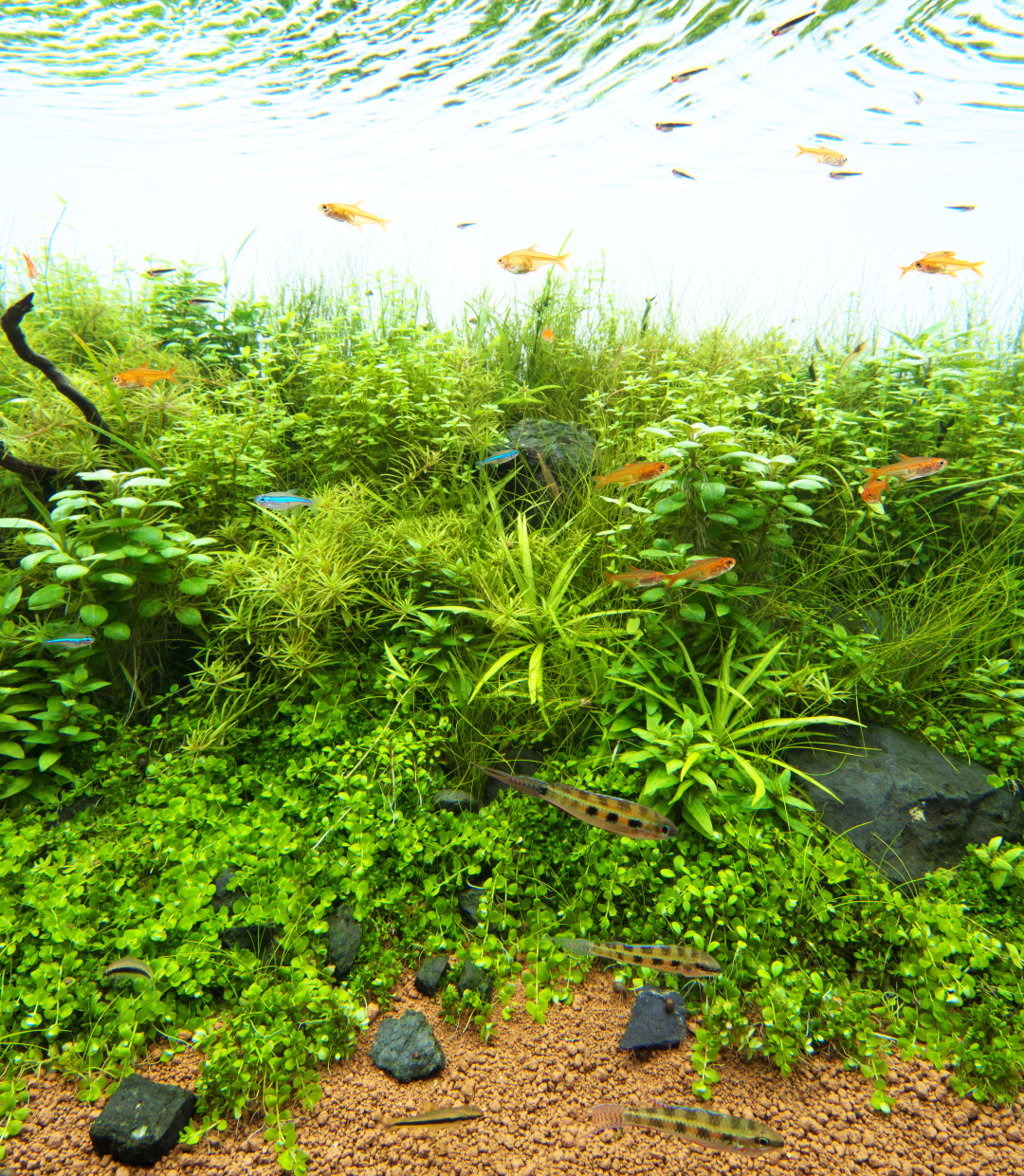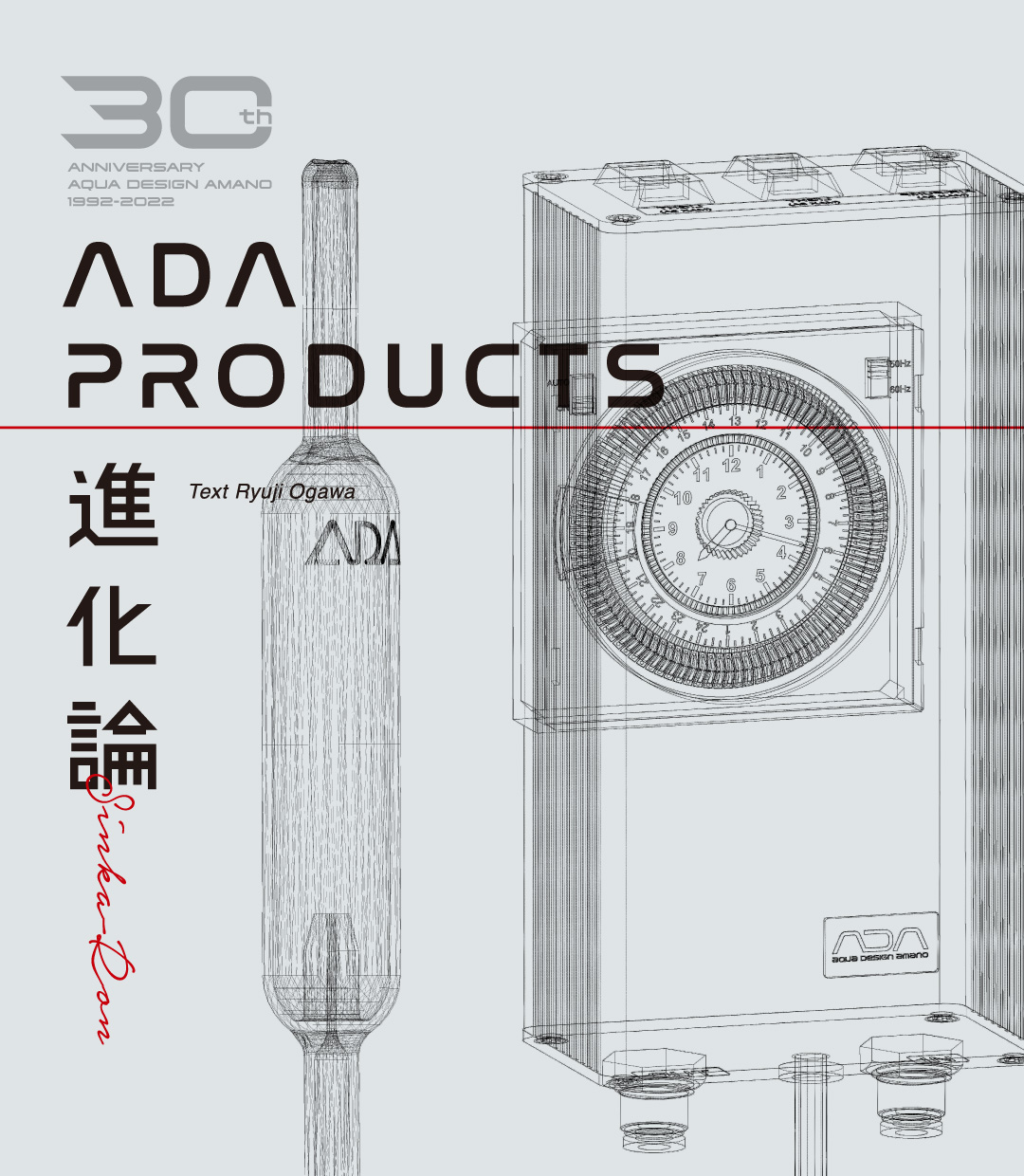NATURE IN THE GLASS ‘Forest of Harshness and Generosity’ Part 2
Expressing the depth of nature with sciophytic aquatic plants and heliophytic aquatic plants with different impressions
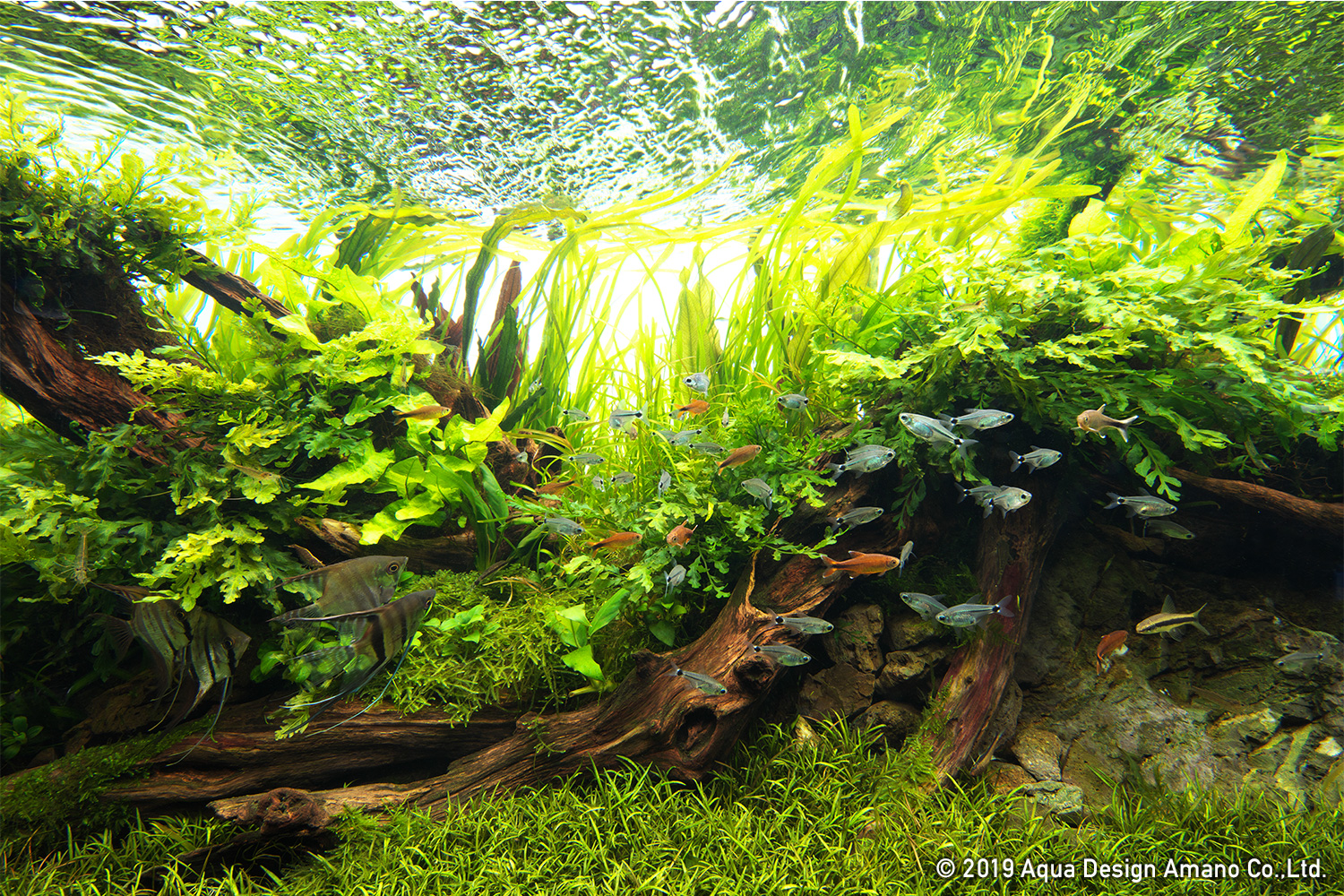
Expressing a sense of depth by planting of aquatic plants
Creating a sense of depth by adjusting density of Vallisneria in the center. A silhouette of Echinodorus ‘Junglester NO.1’ in the back left side assimilates with the driftwood and gives a sense of depth.
Creating a sense of depth by adjusting density of Vallisneria in the center. A silhouette of Echinodorus ‘Junglester NO.1’ in the back left side assimilates with the driftwood and gives a sense of depth.
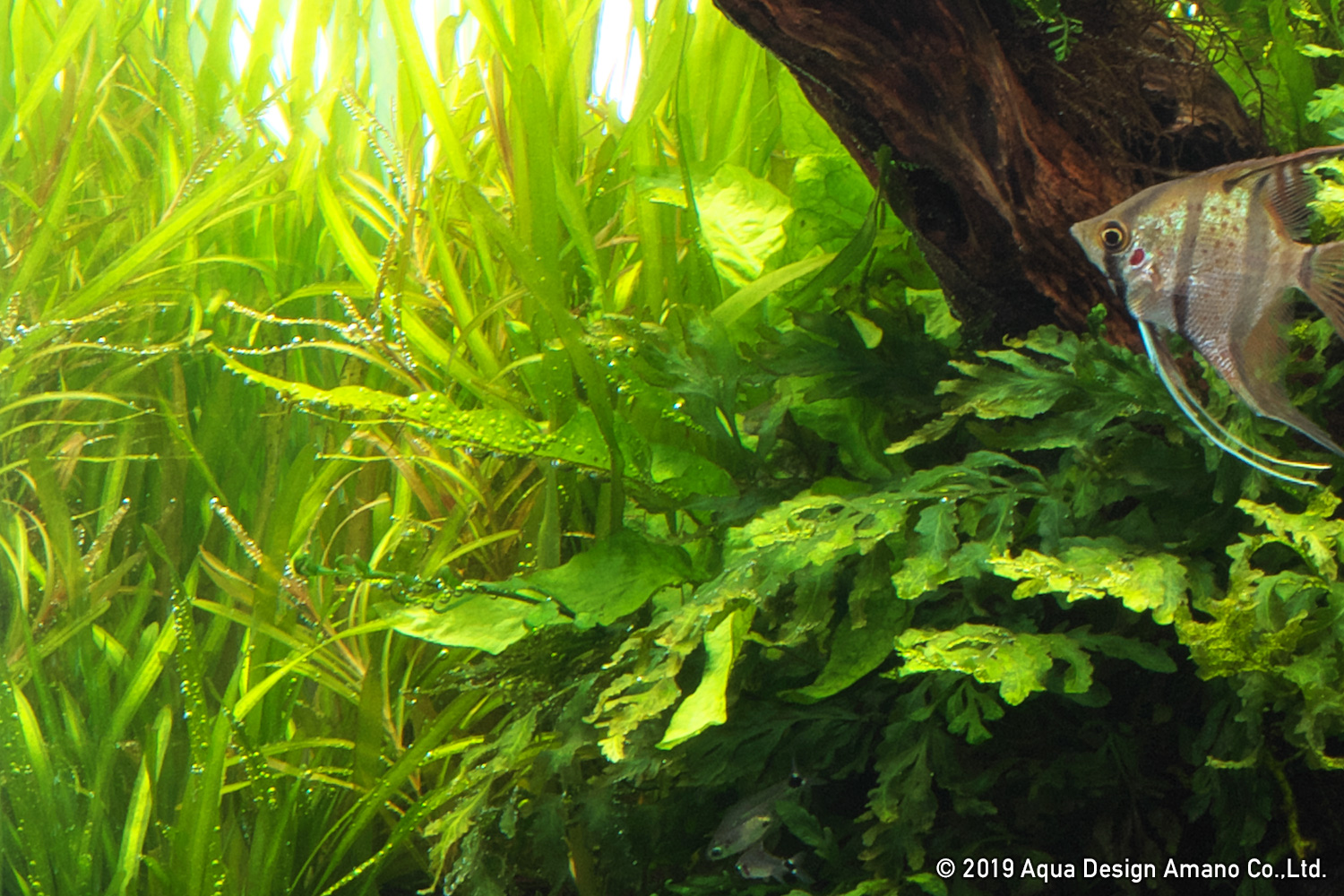
Expressing natural feelings by mixed planting
Grass bushes are likely to consist of many kinds of plants. By planting Vallisneria spiralis and Potamogeton gayi together, I was able to create a natural feeling.
Grass bushes are likely to consist of many kinds of plants. By planting Vallisneria spiralis and Potamogeton gayi together, I was able to create a natural feeling.
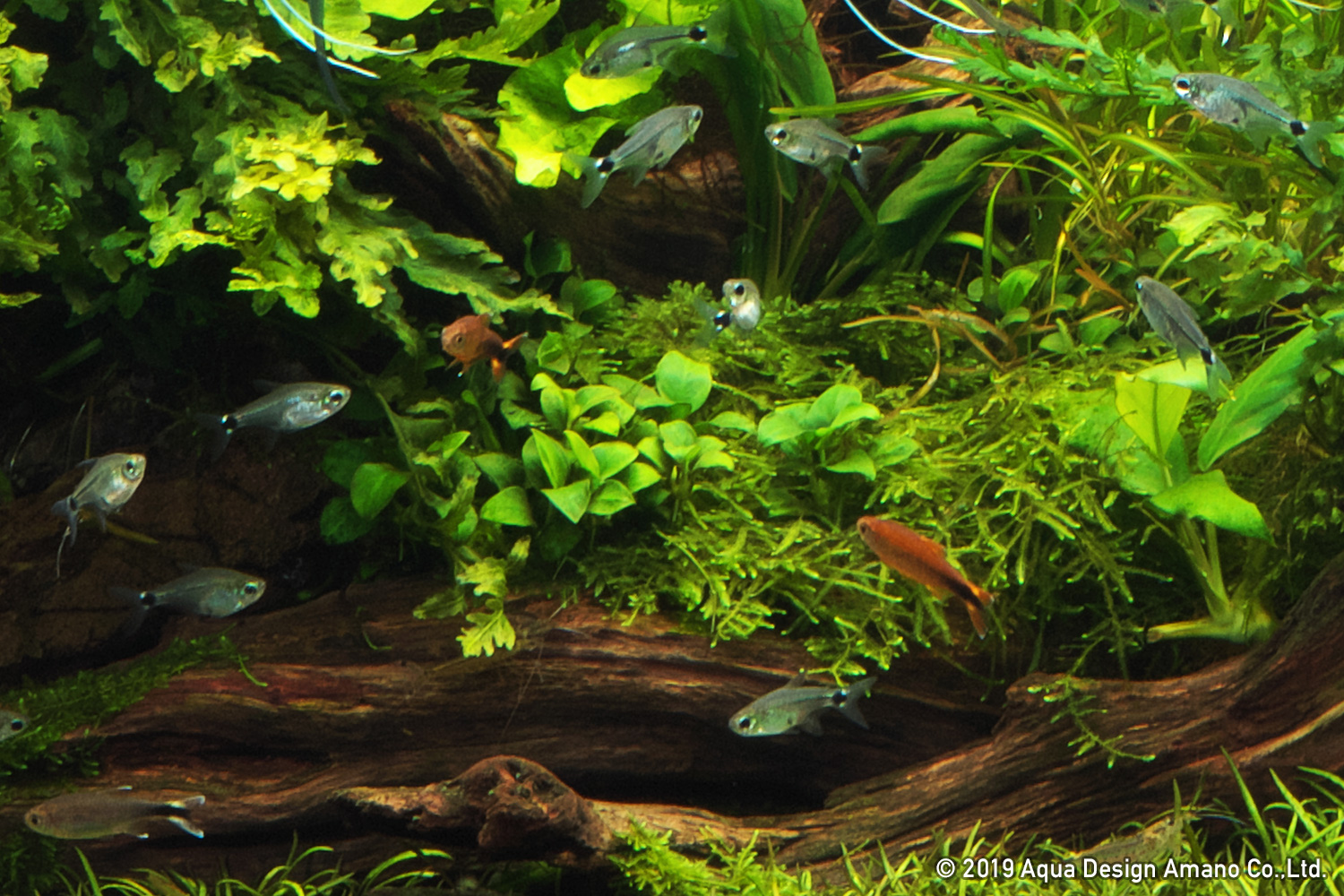
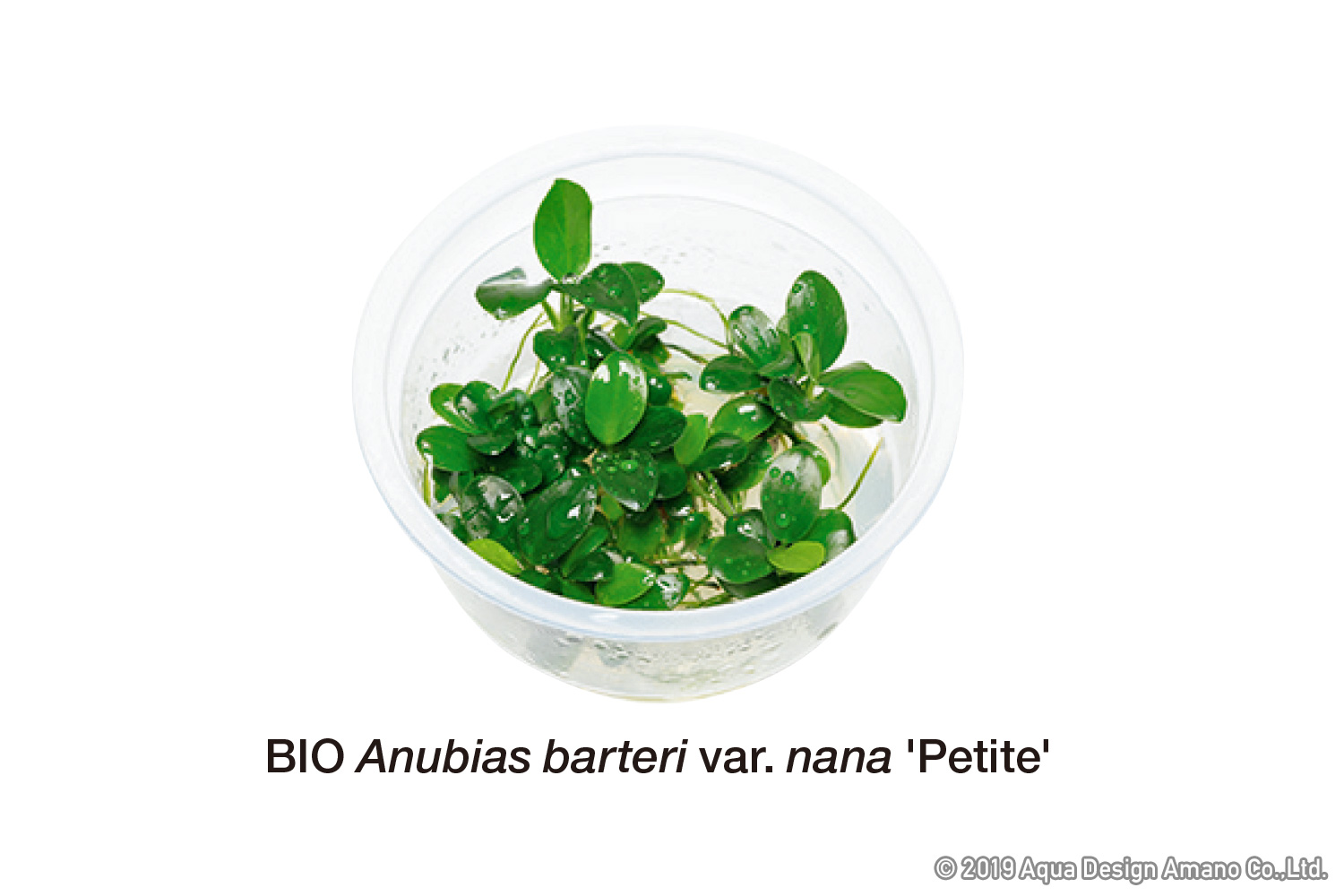
Natural feeling of Anubias and Moss
Because I was focusing on creating a sense of sharpness this time, I defined a part for moss to be attached and a part for driftwood to be exposed. By covering around the Anubias with moss, a natural feeling with a sense of sharpness was created.
Because I was focusing on creating a sense of sharpness this time, I defined a part for moss to be attached and a part for driftwood to be exposed. By covering around the Anubias with moss, a natural feeling with a sense of sharpness was created.
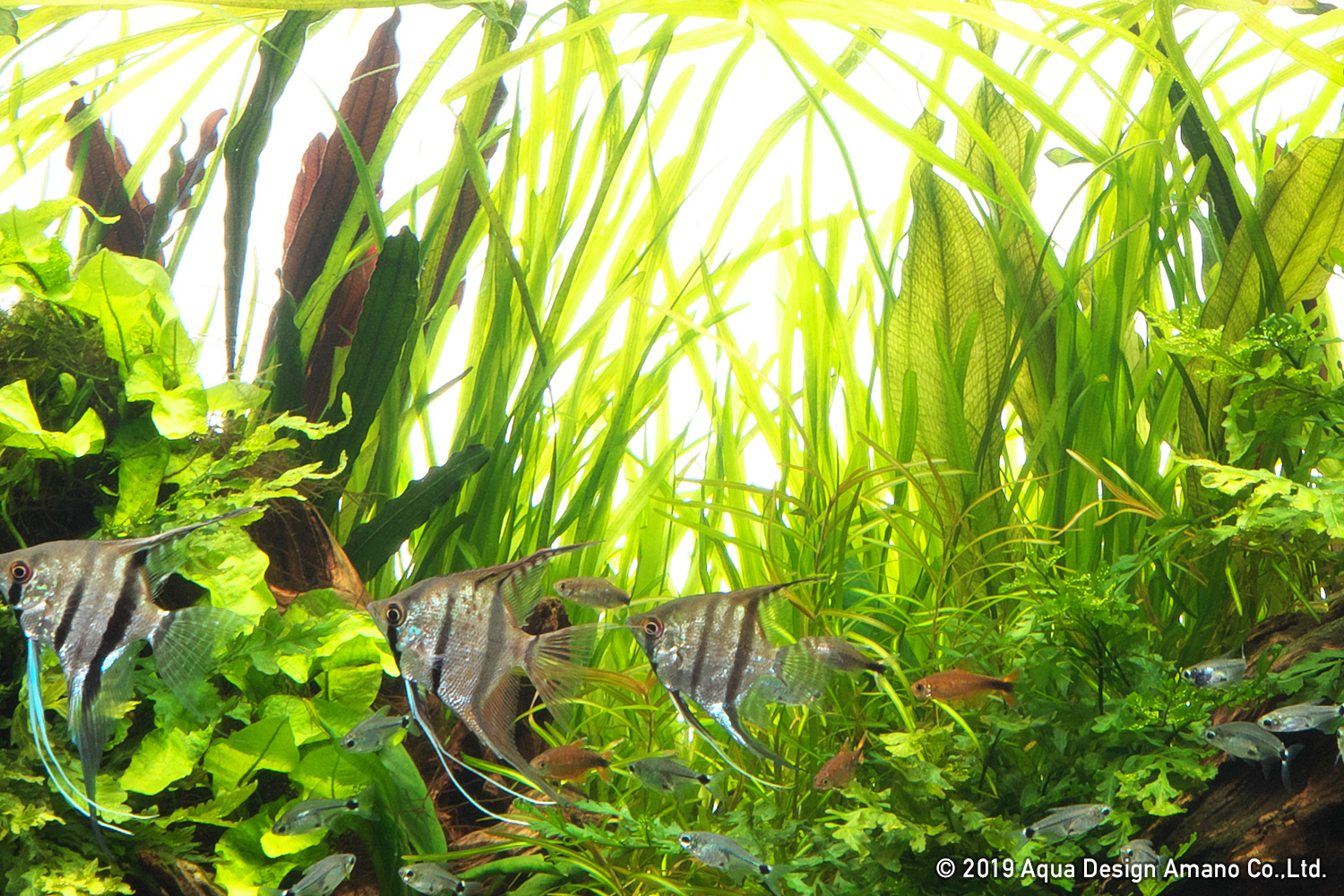
How to use Echinodorus
Because leaves of Echinodorus have a slightly strong impression as an aquatic plant, if they are planted as being alternately hidden and seen between composition materials and other aquatic plants, it becomes easy to harmonize the overall impression. An aspect of Prerophyllum scalare swimming in front of Echinodorus with light permeating its leaves showing beautiful veins vividly arouse the image of the Amazon even more.
Because leaves of Echinodorus have a slightly strong impression as an aquatic plant, if they are planted as being alternately hidden and seen between composition materials and other aquatic plants, it becomes easy to harmonize the overall impression. An aspect of Prerophyllum scalare swimming in front of Echinodorus with light permeating its leaves showing beautiful veins vividly arouse the image of the Amazon even more.
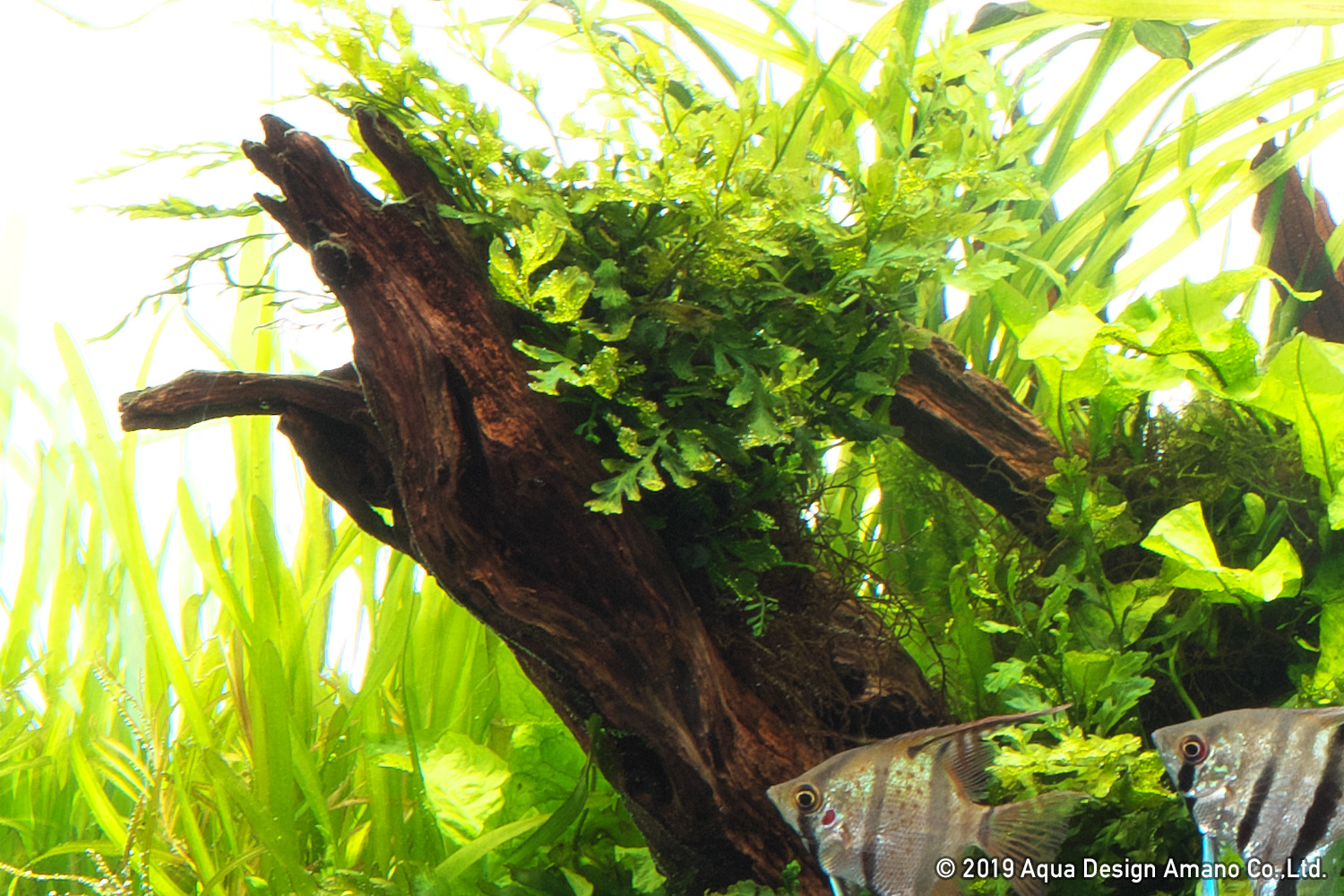
A key point for planting ferns
Planting ferns in appropriate parts on the driftwood in well balance. I made sure not to unnecessarily hide the driftwood texture and left the impression of the materials as much as possible.
Planting ferns in appropriate parts on the driftwood in well balance. I made sure not to unnecessarily hide the driftwood texture and left the impression of the materials as much as possible.
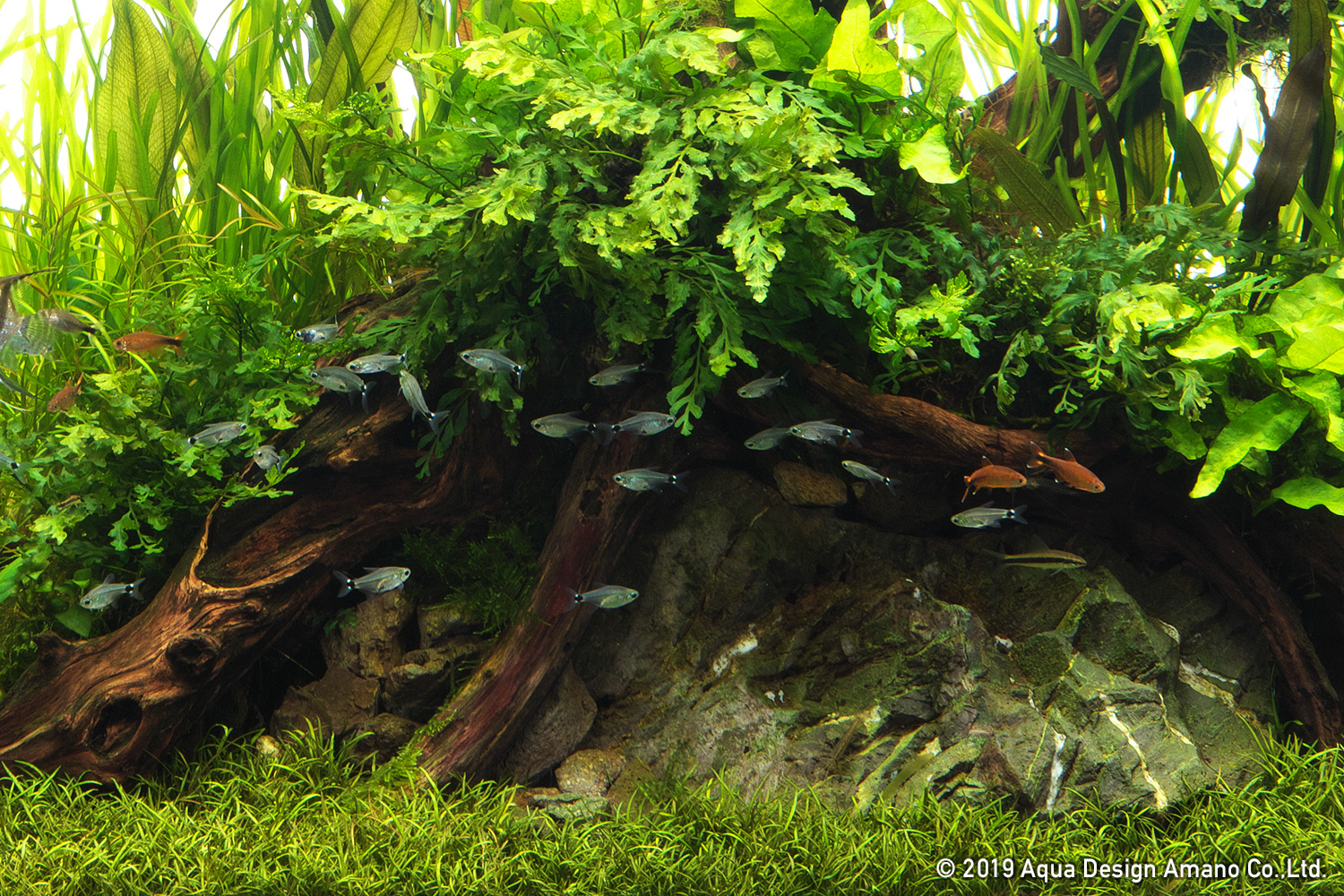
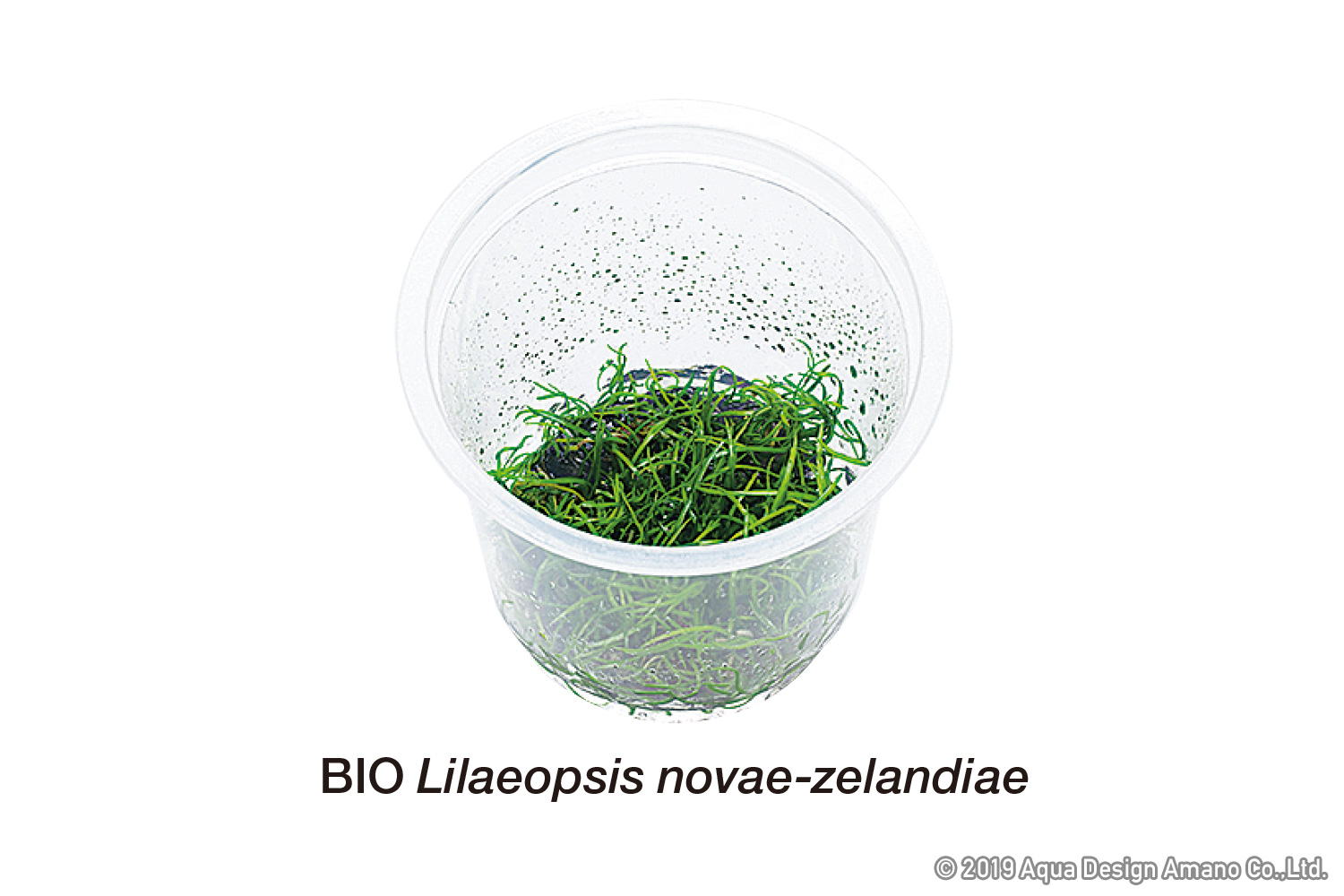
A hideout for fish and undergrowth
The shadowy parts created by the leaves of the ferns have become great hideouts for small fish. Lilaeopsis novae-zelandiae is planted as undergrowth. Because the green color of Lilaeopsis novae-zelandiae is dark, it matches well with the same color toned ferns.
The shadowy parts created by the leaves of the ferns have become great hideouts for small fish. Lilaeopsis novae-zelandiae is planted as undergrowth. Because the green color of Lilaeopsis novae-zelandiae is dark, it matches well with the same color toned ferns.


